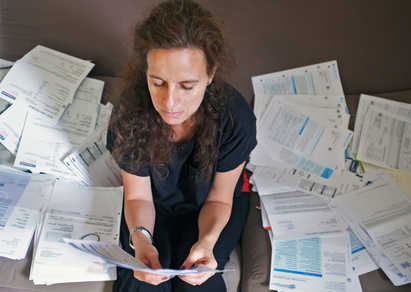The feeling of having a huge debt is basically the same as being buried neck-deep in sand. When you have a financial obligation to meet and your present income does not give you enough wiggle room, all of your actions and choices become restricted. If you are tired of debt and want to live your life in manner wherein you aren’t weighed down by any existing loan, then below are some of the hard steps you will have to take:

Step 1: Stop acquiring new debt.
This seems like common sense, but the truth is that it’s easier said than done. The world seemingly runs on credit nowadays. From your mortgage, to your car loan to your child’s college debt, we jump from one debt to another. While you should keep your eyes peeled for those kinds of debt, you also need to stay vigilant against credit card debt.
The thing about credit card debt is that it develops stealthily and slowly over time, but its effect is just as debilitating as the major loans that you have to apply for.
Here’s the thing though—you do not need to use your credit card. Weaning yourself off of credit cards can be rather difficult though and will entail a lot of sacrifices. If you have a gym membership, cancel that membership and try jogging around the block instead. You can also get rid of other subscriptions for the time being that you’re settling all of your outstanding accounts.
These little yet painful sacrifices can free up cash which you can then use to pay for necessities instead of using your plastic cards. By working with what you have on hand, you can budget your finances more appropriately and even start paying off debt instead of acquiring more of it.
Step 2: Come up with an emergency fund.
Your emergency fund is exactly for what is named after – emergencies. When you are tackling a huge debt and you do not have enough savings tucked away, even the most minor setback can become a major disaster.
Without any savings, not only will you no longer to be able to make your payments because all of your finances are diverted elsewhere but the consequences of missing your payments for a prolonged period of time, i.e. having your home foreclosed, may prove to be the last nail on your coffin. So before you start paying your debt aggressively, you need to build a substantial enough emergency fund first.
Step 3: Start paying your debt.
Now that you have steps 1 and 2 done, it’s time to settle your debt. Pay the interest or minimum on all of your debts (and maybe even a bit of principal if it’s still possible), but start aggressively paying off the principal of the debt with the lowest interest. Once you’re done with that first debt, move the money you would have used for that first debt towards the second debt and so on and so forth.
Using this approach, or the debt snowball approach, helps you to see incremental but encouraging changes in the reduction of your debt. This is how to get out of debt fast.
Kent Farell is an experienced registered financial planner and writer. His blog is full of useful tips to overcome bad debts. He also shares his insights on investing, financial management and lease financing.




